AGD 2012: Towards a New Global Economy: Re-defining Asia’s Role
The first AsiaGlobal Dialogue (AGD 2012) was held from May 31 to June 2, 2012 and was organized by the Asia Global Institute’s predecessor, the Fung Global Institute. The event, which took place in Hong Kong and Shenzhen, attracted more than 400 participants from 22 countries. The group explored the emergence of a new global economy, and looked at how business could be a positive and dynamic agent of change as the global economy re-balances to the East.
AGD 2012 featured keynote speakers including Fung Group Chairman Victor K. Fung, Mr. George Yeo, Mr. Paul Volker, Mr. Tung Chee Hwa, Professor Michael Spence and Professor Paul Romer. They held in-depth discussions spread out across multiple parallel tracks structured around four themes: Global Supply Chains, Asia’s New Financial Structure, The Evolving Growth Models of China and India, and Asia’s Sustainable Development.
Videos
Highlights
-
A Global Think-Tank in Asia for the 21st Century
-
Towards a New Global Economy: Re-defining Asia’s Role
-
Transforming China’s Economy and Banking Sector - A Titanic Story of Reform
-
The Rising Role of India in the New Global Economy
-
Business in Asia - Policy Challenges in the New Global Landscape
-
Global Growth and Related Challenges
-
Towards a New World of Finance
-
Evolving Growth Models - China and India
-
Asia’s Sustainable Development
-
China-US Relations in an Emerging East Asia
-
Global Supply Chains
-
Re-defining China’s Role in Global Growth
A Global Think-Tank in Asia for the 21st Century
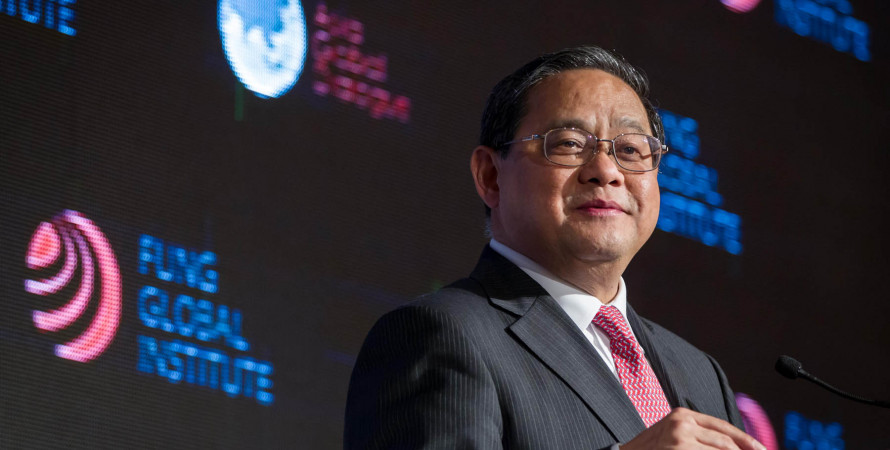 Victor K Fung
Victor K Fung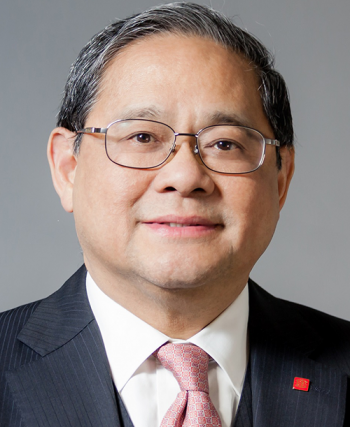
Victor K Fung
Chairman, Asia Global Institute“The mission for the Fung Global Institute is to generate, disseminate and innovate thinking and business-relevant research on critical global issues from Asian perspectives. We always use the word “perspectives”, in the plural, as we do not believe there is one single Asian perspective but many diverse Asian perspectives.”
Founding Chairman Victor K. Fung introduced the Institute and the thinking behind its establishment in August 2011
- Generating real world research is the core of what the Fung Global Institute does. For us this is not merely about being commissioned to undertake research projects and producing reports. It is more about engaging with business leaders and other stakeholders in an interactive cycle of learning on our four areas of interest: global supply chains, finance in Asia, growth models in China and India, and Asia’s sustainable development.
- Looking ahead, we would like the Fung Global Institute to be the recognised source of Asian views and ideas on key global issues. We see the Institute as giving business leaders, policymakers and civil society perspectives and tools to navigate through this era of global transformation. In addition to building our global network of experts, we will provide a global platform for younger Asian thought leaders with fresh views.
- To put it simply, the Fung Global Institute is not about Asia becoming the dominant economic power in the new world order. It is really about working together, sharing and communicating to explore the 21st century as a Global Century where Asia is fully engaged.
- The best form of corporate responsibility is to contribute to the dialogue with the state and civil society on how to achieve good jobs, good profits, social justice and environmental sustainability without having to always rely on fiscal or monetary means.
- As drivers of innovation, markets and job creation, the corporate sector has a unique and major role to play to help address the unprecedented challenges of our time such as the re-balancing of the global economy, inclusive growth and climate change.
- Multilateral trade and investments remain the engines of global growth and prosperity. The Institute aims to work towards global cooperative solutions to generate growth and employment around the world. Without global cooperation, it will not be able to bring the necessary brainpower and resources to address the complex challenges facing the global economy today.
- If our generation does not act, and act quickly, there could well be a clash of civilisations of epic proportions. Asia is a melting pot of many civilisations. The situation is fluid and requires careful handling, with great tolerance and understanding. Our generation has the responsibility to ensure that what lies ahead will become a celebration of civilisations, where there will be a virtuous race to the top of sustained global prosperity, and not a race to the bottom of armed conflicts.
Towards a New Global Economy: Re-defining Asia’s Role
 Stuart Gulliver
Stuart Gulliver
Stuart Gulliver
Group Chief Executive, HSBC Holdings plc Chairman, The Hongkong and Shanghai Banking Corporation Ltd.When the centre of the global economy shifts so does its intellectual centre. We can see this shift in action today as emerging economies begin to exert their influence on the global policy agenda
Opening Address
For gaining a sense of the new global economy, HSBC’s research indicates that by 2050: -
- The emerging economies will be bigger collectively than the developed markets
- Capital flows between emerging market areas will increase tenfold
- China’s income per capita will grow by more than 800 per cent
Europe today is having an emerging markets crisis because the lessons of the late 1990s Asian crisis - of building up excessive leverage and inflexible exchange rates - were not learned. Four essential steps should be taken to ensure the eurozone remains intact: -
- Europe-wide deposit insurance provided by the European Banking Authority
- An EU Troubled Asset Relief Programme provided initially by the European Financial Stability Facility to recapitalise Europe’s banks
- A clear path towards fiscal union or a fiscal concordat, and policies to narrow imbalances between member states
- Eurobond issuance to refinance troubled sovereigns
Unseen factors could test assumptions about the faster-growing markets. In China, for example: -
- A sudden rise in food or energy prices could effectively wipe out chunks of the new middle class almost as fast as they have been created
- A faltering of labour supply due to a rapidly ageing population (by 2050 a third of the entire population - 450 million people - will be over 60) could reduce China’s labour supply and undercut its growth
- Each young worker could potentially be looking after six elderly dependents as a result of the one-child policy
Financial services will need to play a greater role. The revolution in trade must be matched by the development of stronger capital markets. Asian financial centres will need to continue to grow rapidly to support expanding capital flows - and to support the internationalisation of the renminbi.
Transforming China’s Economy and Banking Sector - A Titanic Story of Reform
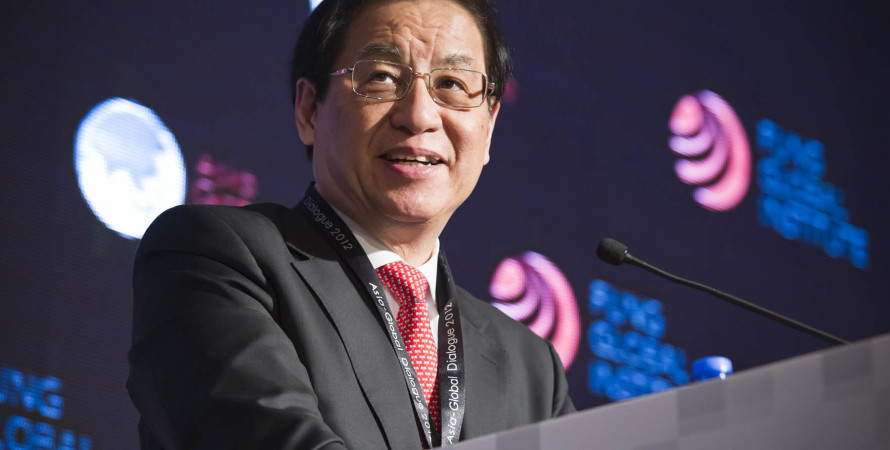
"When I was appointed the first Chairman of the China Banking Regulatory Commission, or CRBC, in 2003, I took a close look at all kinds of regulatory and market data and information, what I saw was quite terrifying... I felt like the captain of the Titanic."
Keynote Address
- China’s economic reforms have lifted millions out of poverty and turned its economy into the second largest in the world within three decades. However, in Premier Wen Jiabao’s words, China’s economic growth is “unsteady, unbalanced, uncoordinated and unsustainable’’.
- The greatest contribution China can make as a responsible global stakeholder in building a new global economic and social order is to keep its own house in order - namely, to make its own economy “more steady, more balanced, more coordinated and more sustainable”.
- China can reach the ambitious targets it set for itself in the 12th Five Year Plan if it knows where to focus attention and effort. Taking environmental protection as an example, one imperative is to design and build energy efficient residential housing and office buildings. Another is to develop energy-efficient modern industries. China’s carbon footprint and energy intensity will be greatly reduced if all new housing is built with “green” materials and technology.
- China’s banking sector has also undergone a transformation. Transparency and honesty in disclosing the real picture about the operations of China’s banks were crucial to this process, which was designed to preserve stability while relentlessly advancing reform.
- Among the results achieved in relatively short time: 41 foreign strategic institutional investors joined 32 Chinese banks, nine foreign banks invested in 41 township financial institutions. Bad assets were hived off, new capital was injected and new skills and knowledge deployed.
- Today all four big state banks and ten medium-sized mixed ownership banks are listed at home or abroad, with price/book ratios at over three times. Their revenues have increased by 15-20 per cent annually. And Chinese taxpayers did not have to pay a penny for this reinvigoration of the Chinese banking industry.
The Rising Role of India in the New Global Economy
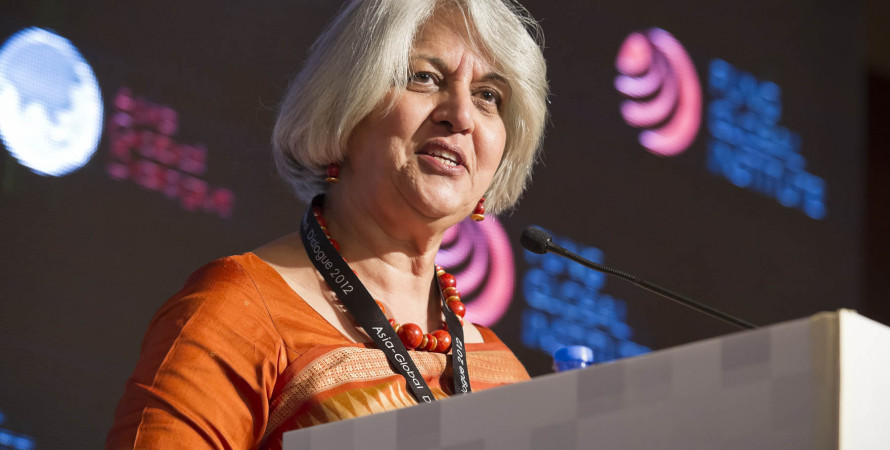 Isher Judge Ahluwalia
Isher Judge Ahluwalia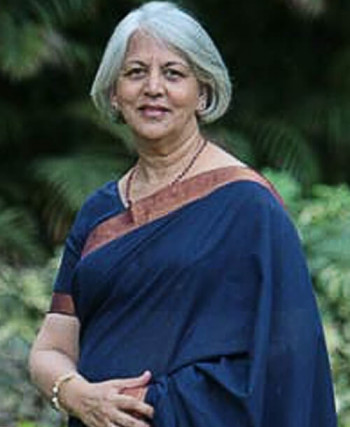
Isher Judge Ahluwalia
Chairperson, Board of Governors, Indian Council for Research on International Economic Relations"India recognises the importance of interdependence in the new global economy and its responsibility to reform the institutions of global governance. We must also integrate at a much faster pace with the rest of Asia."
Opening Address
- Though India only started economic reform and opening in 1991 - 20 years after China - it has performed beyond many expectations, with annual GDP growth of about 8 per cent from 2001-2011.
- To keep matters in perspective, China’s economy is more than four times the size of India’s. China’s contribution to world GDP increased from 3.7 per cent to 10.5 per cent from 2000-2011, while India’s contribution increased from 1.5 per cent to 2.4 per cent.
- India’s reforms were gradual because, in a democracy, consensus must be built along the way. The reforms were carried out at “the centre” and in the states by different political parties in power. As a result, the reforms have wide ownership across the political spectrum.
- The success of Indians in the IT sector overseas, particularly in the US, meant that non-resident Indians and their partners in India became important voices for modernising India’s economy and helping it become globally competitive. Other sectors - such as financial and health services, pharmaceuticals and automotive - have also shown promise and competitive strength.
- The acceleration in India’s economic growth was led by the private sector, which invested strongly during the decade 2001-2011 once it saw that reforms were there to stay.
- New challenges: how to bridge the gap between a growing demand for different skills as the economy resumes a high-growth path, and their supply; how to invest in cities so that they can play their role as engines of growth (India is relatively less urbanised). Major concerns: inadequate progress on employment; institutional reform has been slow.
- For India to resume 8 to 8.5 per cent per annum growth it should look towards Asia, if markets in the West are slowing down. India’s large autonomous engines of growth, for example, urbanisation, also need to be put back on track.
- Today, 50 per cent of India’s population is under 25 years of age and the percentage of India’s working age population will continue to increase for another 40 years. That demographic opportunity must be turned into a dividend.
Business in Asia - Policy Challenges in the New Global Landscape
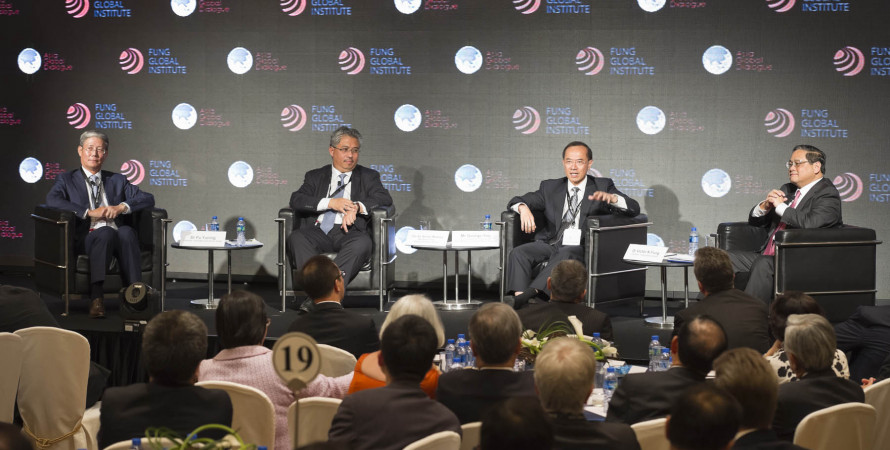 Tan Sri Azman Mokhtar
Tan Sri Azman Mokhtar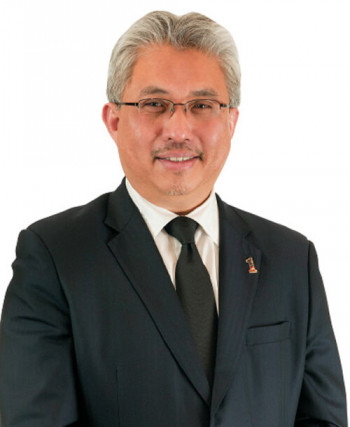
Tan Sri Azman Mokhtar
Managing Director, Khazanah Nasional Berhad
George Yeo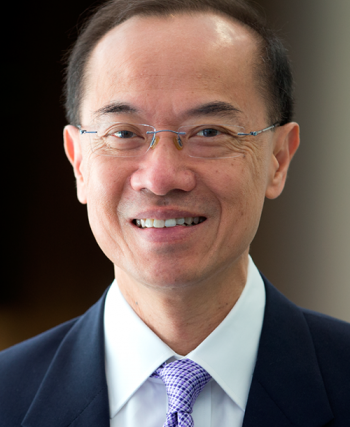
George Yeo
Visiting Scholar, Lee Kuan Yew School of Public Policy, National University of Singapore Former Chairman, Kerry Logistics Former Singapore Foreign Minister
Victor K Fung
Victor K Fung
Chairman, Asia Global Institute(Left to right) Yuning Fu, Azman Mokhtar, George Yeo, Victor K Fung
A panel of Asian business and policy leaders provided perspectives on changes being experienced in the region as the global economy re-balances to the East. They also discussed the role of business and policymakers in meeting new challenges and maximising new opportunities.
Global Growth and Related Challenges
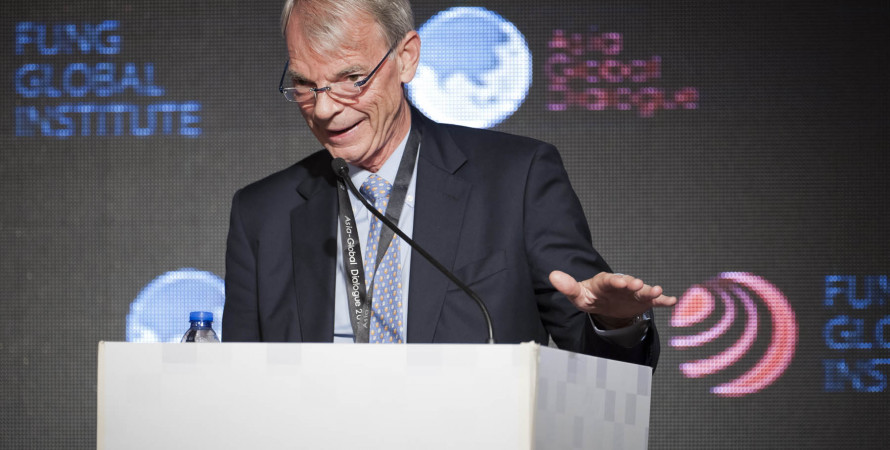 Michael Spence
Michael Spence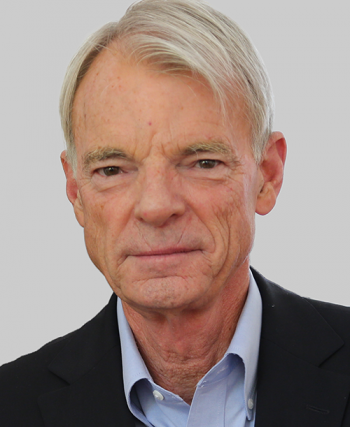
Michael Spence
Nobel Laureate Chairman, Advisory Board, Asia Global Institute"l think there's a growing awareness that if we try to accomplish global transformation using the old growth model, it'll fail. The natural resource base of the planet is just not up to that."
Plenary Address
- The advanced economies are out of money, out of growth, out of balance and out of trust. That is probably the principal challenge facing the global economy.
- The present situation has all the ingredients of “a perfect storm”:
- Massive failure in the area of counter-cyclicality in both private and public sectors with varying weights across countries (and with some notable exceptions)
- Substantial demographic headwinds pushing against fiscal re-balancing and growth, with embedded inter-generational fairness and equity issues
- An involuntary build-up of debt and other liabilities as a result of the shock of the crisis
- Countries running on Defective Self-Limiting Growth Models that have built-in decelerators and cannot keep functioning
- The challenge is to adopt a sensible, balanced approach over time to deleveraging and restoring growth in a more sustainable pattern. There is a double burden: to pay for past excesses and to invest in assets that generate future growth and employment.
- Global macro risk is extraordinarily large, with Europe its epicentre. In the US, there is a delayed but growing recognition of structural and re-balancing challenges in addition to the deleveraging process. Emerging economies are the bright spot.
- China is just under half the size of the European Union or the United States. 8 per cent growth in China is approximately equivalent to 4 per cent growth in Europe or America. There are challenges, but leadership, talent and competence to deal with them.
- India is a little behind in terms of growth acceleration but is the other future economic giant. Loss of reform momentum in the past year is a temporary setback. Restoring it is a little more urgent than it might otherwise be if its public sector balance sheet were larger.
- Present global challenges come down to various dimensions of sustainability: stability, equity (inclusiveness and social cohesion); structural balance and avoidance of defective, unsustainable growth patterns; global coordination and cooperation, eg, in trade, and long-term scalability, ie, whether systems that work on a smaller scale will work in a global economy that will be three times its current size in the next 20 to 30 years.
Towards a New World of Finance
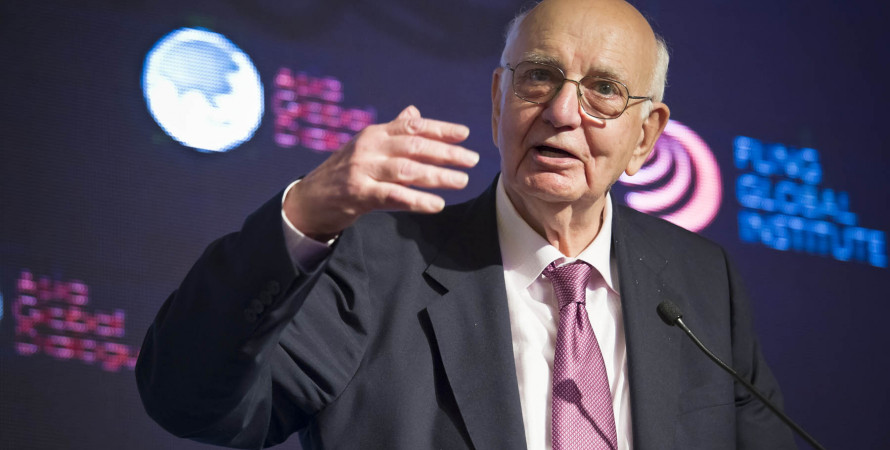 Paul Volker
Paul Volker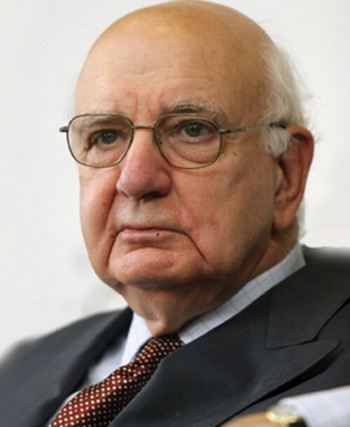
Paul Volker
Former Chairman, Board of Governors, US Federal Reserve"Within a generation, China alone will be far larger economically than either North America or Europe. Barring some great unknown catastrophe, Asia might eventually approach the size of the United States and Europe together."
Gala Dinner Keynote Address
- Financial systems have been vulnerable to breakdowns. If there is not an international consensus on some key points, current reform efforts will be greatly weakened if not aborted. None of the established international institutions nor the ad hoc committees and councils of financial authorities ranging from a G-5 to a G-20, have systematically and consistently been able to exert authority.
- International monetary disorder lies at the root of the successive financial crisis of the 1990s and the more recent crisis.
- When any country is left to its own policy devices and preferences, those preferences may lead to prolonged and ultimately unsustainable imbalances. Sooner or later adjustment will be necessary - if not by considered domestic policy or a well-functioning international monetary system, then by financial crisis.
- Active participation in an open world economy, with all the benefits of international trade and investment, requires some surrender of economic sovereignty.
- At the heart of the matter is an international adjustment process from which discipline has been absent. Among possible practical measures of enforcing the necessary adjustments are: Stronger surveillance by the IMF and a firmer commitment by nations to abide with “best practices” and agreed norms; direct and public recommendations by the IMF, the G-20, or otherwise, following mandatory consultation; qualification or disqualification with respect to the use of IMF or other credit facilities, and interest or other financial penalties or incentives along the lines under consideration in Europe.
- A new approach toward exchange rate fluctuations may be more promising, where individual nations would direct their interventions and if necessary their economic policies to defending the “equilibrium rate”. Aggressive intervention by trading partners might be authorised by an international authority to promote consistency.
- A useful reserve currency must be limited in supply but with sufficient elasticity to satisfy large, unpredictable needs that may arise in a turbulent financial world. It must also maintain confidence in its stability and availability. One or more Asian nations may be tempted to seek or at least tolerate reserve currency status for its own money.
Evolving Growth Models - China and India
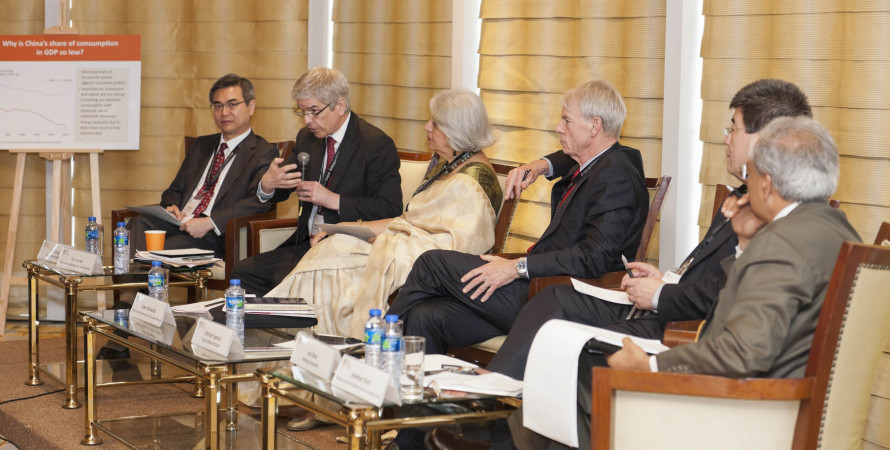
Parallel Breakout Sessions
The Dragon and the Elephant - A Continuing Tale of State vs Market
China and India are at different stages in their development, panellists noted, with China being a manufacturing-based economy and India a consumption-based one. Discussions invariably point to their different political systems, but the critical issues are similar for both countries: inadequate governance and the worrying social implications of higher growth with widening wealth gaps.
Urbanisation - Transforming Policy and Business
Recognising that urbanisation is becoming the engine of economic growth in both China and India, panellists discussed how China and India should plan and manage urbanisation in accordance with environmental and social sustainability principles, as well as the challenges and opportunities each country may face in the process.
Asia’s Sustainable Development
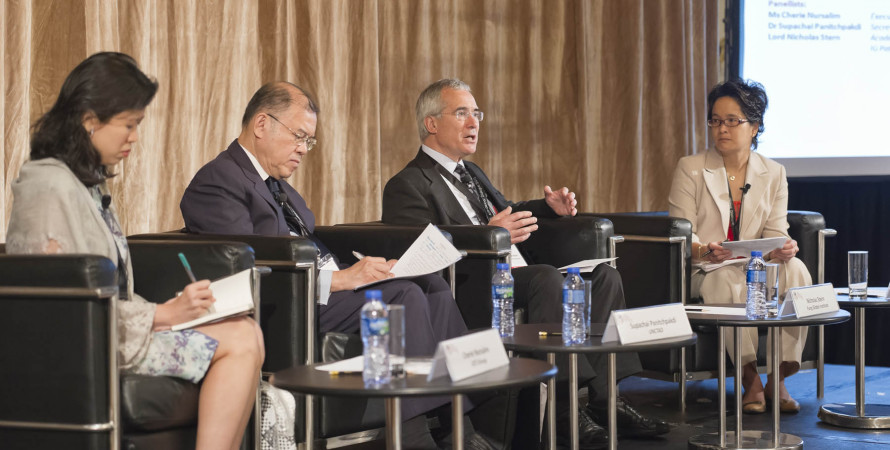
Parallel Breakout Sessions
Sustainable Growth in Asia - Finding the Right Leverage Points
Panellists discussed ways in which economic development could occur in a manner that was both environmentally and socially responsible. They considered the role of values, collective action and technology in achieving this. The challenge of coordinating collective action needed to be addressed to tackle wider issues of environmental sustainability.
Making Markets Work for the Millions
With the world population approaching 9 billion by 2050 - 5 billion in Asia - the pressure is on to find suitable growth models that can lead Asia into its next stage of development. Markets were instrumental in the “Asian miracle” of the past. The question is whether markets can also be relied upon to bring the millions onto a future pathway of prosperity within social and environmental limits.
China-US Relations in an Emerging East Asia
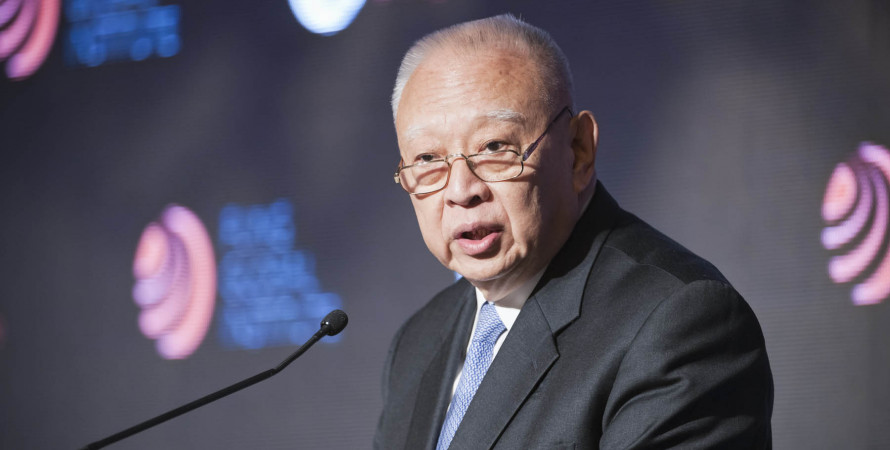 Chee Hwa Tung
Chee Hwa Tung
Chee Hwa Tung
Founding Chairman, China-United States Exchange Foundation Vice-Chairman, National Committee of the Chinese People's Consultative Conference"I believe a new type of great power relationship between one rising power, China, and the present leading power, the United States, is not only possible but also necessary."
Luncheon Keynote Address
- Breathtaking changes have taken place in East Asia in the past 60 years through emphasis on economic development, improving people’s livelihood and developing participative political systems, often in that order. Other factors include Asean; the globalisation of trade and services; China’s reform and opening, and the state of peace throughout East Asia.
- China has chosen a path of peaceful development in international relations because its interests and those of the world are increasingly intertwined. The path of peaceful development is a part of Chinese culture, values and lessons of history.
- China is committed to an independent foreign policy that adheres to the five principles of peaceful coexistence. It will increasingly assume its fair share of global responsibility on the global stage consistent with its abilities to do so; it supports the UN’s centrality in matters affecting world peace and security and is committed to addressing international disputes in a peaceful manner.
- China’s military expenditure, at approximately 1.5 per cent of GDP, is comparatively low. Because China has no extra-territorial ambition, her military expenditure is defensive in nature.
- China is trying to resolve the territorial disputes of South China Sea and East China Sea peacefully, with the suggestion that the disputes should be shelved, while the natural resources under the sea are shared.
- In the past 40 years, eight presidents of the United States and four generations of Chinese leaders have pursued the objective of improving China-US relations, which have been improving steadily despite ups and down.
- China and the United States find common interests in working together on a range of transnational challenges, from the prevention of the spread of nuclear weapons to financial stability and prevention of epidemics.
- There is still mistrust and anxiety that with the rise of a nation, conflicts with the present leading power may be unavoidable. To build understanding and trust will take time. Fortunately, the leaders of the two countries are very committed to this and to increasing people-to-people exchanges at all levels so that understanding and eventually trust can be developed.
Global Supply Chains
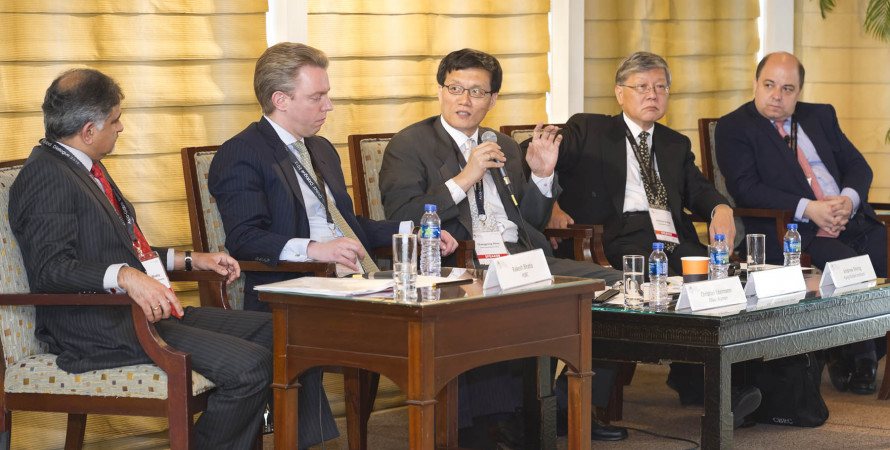
Parallel Breakout Sessions
Made in the World - What’s Changing Supply Chains?
The panel discussed the defining features of today’s supply chains and key factors changing the environment in which they operate. These include shifts in global patterns of production and consumption and social and environmental factors. Participants focused on the global food supply chain, and on potential trade-offs between higher value-added production and job creation.
Supply Chains in an Uncertain World - Adding Value and Managing Risks
Panellists looked at opportunities and risks for supply chains, acknowledging that challenges and uncertainties would only increase in step with globalisation and rates of change. It was agreed that the architecture of supply chains is as important as their operations. Risks include disruptive technologies, natural disasters and labour costs.
Re-defining China’s Role in Global Growth
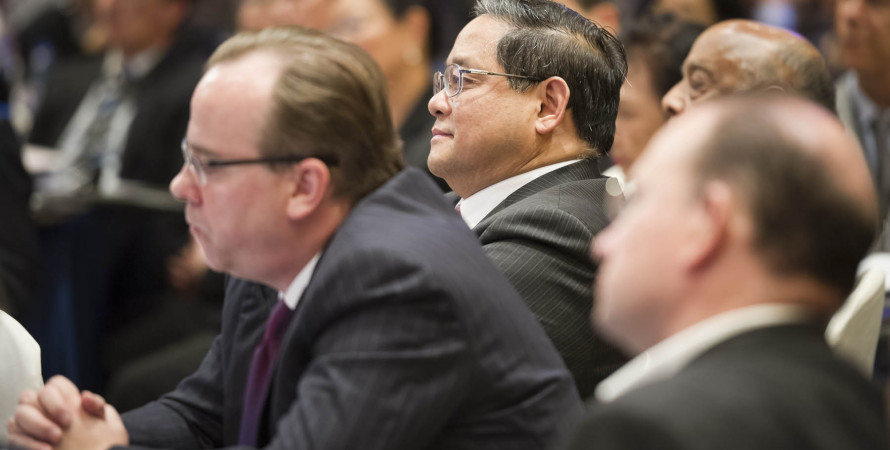
AGD 2012 in Shenzhen
On 2 June, Asia-Global Dialogue 2012 moved from Hong Kong for a half- day event, Asia-Global Dialogue in Shenzhen convened with our strategic partner Peking University HSBC Business School. AGD 2012 in Shenzhen explored the theme “Re-defining China’s Role in Global Growth”.
AGD 2012 in Shenzhen attracted more then 500 participants including graduate students, eminent Chinese academics and thought leaders, in addition to international participants from AGD 2012 in Hong Kong.
Sponsors
Platinum Sponsor

Table Gift Sponsor





